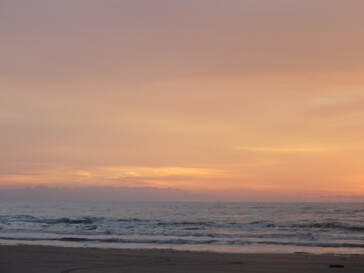 Caption: I am thankful for my home and family, and I’m grateful each morning for a beautiful sunrise.
Caption: I am thankful for my home and family, and I’m grateful each morning for a beautiful sunrise. Unfortunately, the true story of the first Thanksgiving is not quite that simple or, even, necessarily all that friendly. Historians have been arguing for years over exactly what did happen at the first Thanksgiving. There are several accounts. Some even claim that the traditional Thanksgiving feast did not include turkey, mashed potatoes or pumpkin pie; instead, they dined on “deer meat…. local vegetables and fish.”
I will not claim to have sorted out all of the historical confusion, but I would like to share two historical accounts with you. I'll leave it with you to do more digging and figure out the facts.
If you are traveling to Plymouth Massachusetts for Thanksgiving, there are different historical presentations.
- “You can watch the official parade, in which townspeople dressed like pilgrims march to Plymouth Rock bearing blunderbusses and beating drums.”
- “Or you can stand on the top of Coles Hill with indigenous people and their supporters and fast in observance of what they call a "national day of mourning."
As the old saying goes, there are two sides to every story. History is no different. History as we encounter it in school is written to match the perceptions of the people writing the textbooks—often correlating with the political party in power at the time.
I know, when I dressed up as a Pilgrim in 3rd grade and participated in our school’s Thanksgiving play, we did not talk about the smallpox epidemic that killed more than 90% of the local Native American population at that time on the New England coast.
Our play only talked about grateful pilgrims and supportive Native Americans who helped the pilgrims learn how to plant corn.
You will remember that we have talked before about perceptions; Perceptions are not necessarily true. Perceptions are what you think, but perceptions are not always based on facts, as we have experienced throughout the coronavirus pandemic.
____________
For a more complete definition of perceptions, see: Why Do People Fear the COVID Vaccine More Than COVID-19? The Perception of Control
____________
Steven Peters, a spokesperson for the Mashpee Wampanoag Tribe, has been working with other Mashpee and Herring Pond Wampanoag tribe members along with local museums to try and bring a more accurate Thanksgiving story to light. He said,
“Even though it’s inaccurate, we can’t just bury it…. I think the only way forward is to understand the history the way that it happened…. There’s a place where those things do belong, as a point that we don’t make that mistake ever again.”
He went on to say that he and his family will continue to celebrate Thanksgiving. They celebrate Thanksgiving every year after the National Day of Mourning in Plymouth, Massachusetts. Yet, he reminds us that it is important to look at both sides of the story.
In the middle of your hectic Thanksgiving celebration, I hope you take a few minutes to read these articles that I have cited and to think about what they tell us about our traditional historical account of the first Thanksgiving. No, history is not always accurate.
The Smithsonian Channel is releasing a new film this year, “Behind the Holiday: the First Thanksgiving.” It was filmed at the Plimoth Patuxet Museum.
What are you thankful for this year?
 RSS Feed
RSS Feed
